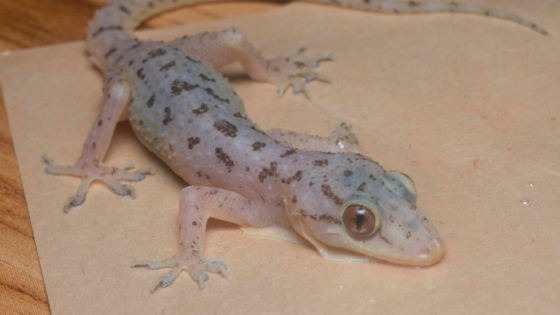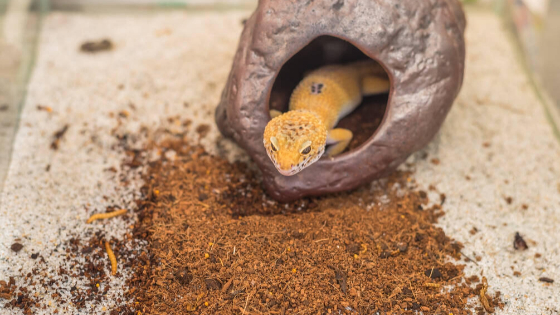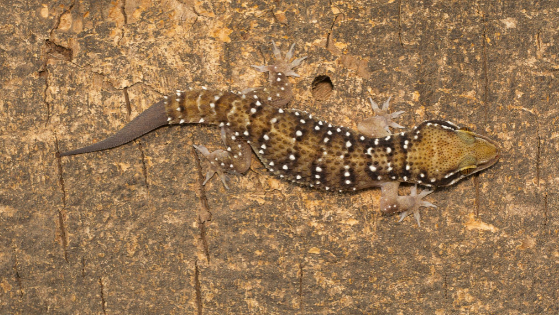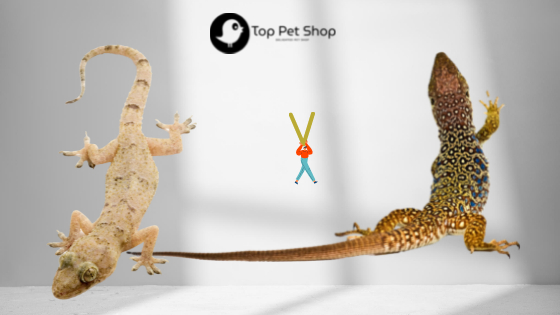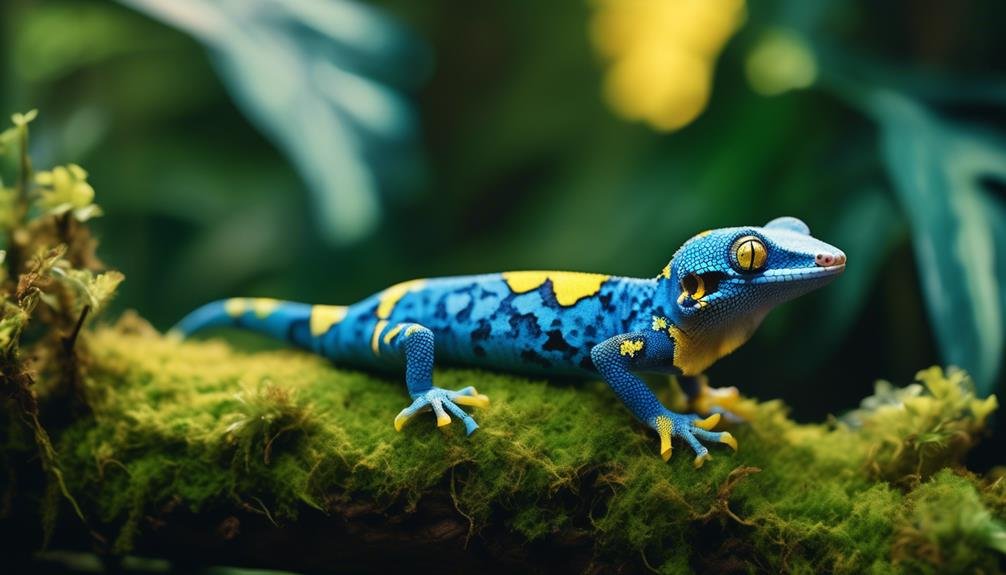
The rare blue-and-yellow gecko, scientifically known as Phelsuma klemmeri, is teetering on the brink of extinction. This remarkable reptile, with its striking turquoise blue and yellow head, captivates the eye with its vibrant colors.
Native to the northwest coast of Madagascar, the gecko’s natural habitat is the bamboo forests found in the Ampasindava Peninsula and near Mandrozo Lake. However, the survival of this unique species is under threat, prompting urgent conservation efforts.
Its story, filled with intriguing details about its taxonomy, habitat, and behavior, unveils the delicate balance between its existence and the encroaching danger.
Key Takeaways
- P. klemmeri, a small gecko species, is facing the threat of extinction.
- It is found in northwest Madagascar along the coast, specifically the Ampasindava Peninsula and near Mandrozo Lake.
- The gecko primarily inhabits bamboo forests and is often found on yellow bamboo canes.
- P. klemmeri feeds on insects, invertebrates, sweet fruit, pollen, and nectar, and is active during the day.
Taxonomy and Description
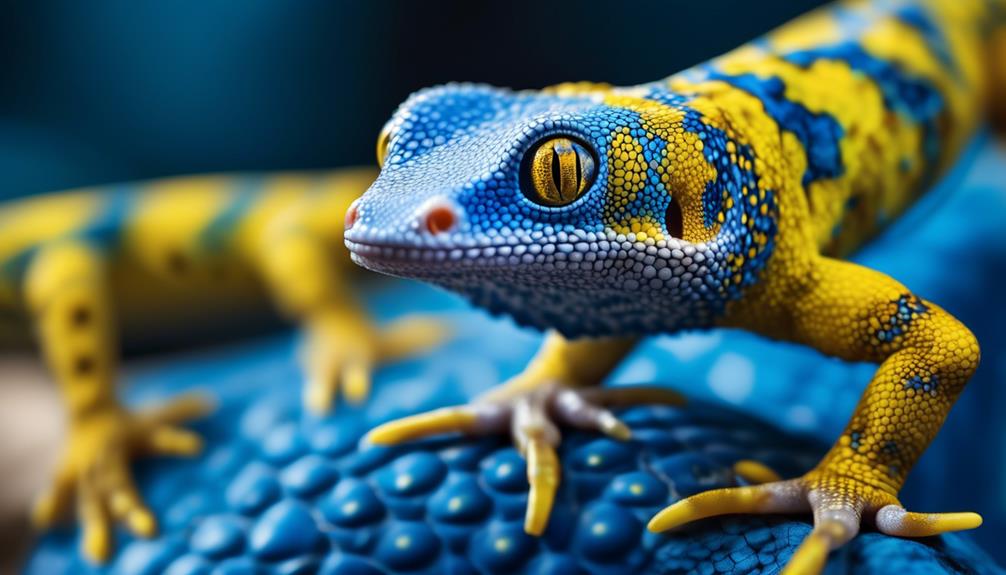
Pristurus klemmeri, commonly known as the Blue-and-Yellow Gecko, is a small lizard species found in northwest Madagascar along the coastal regions of the Ampasindava Peninsula and near Mandrozo Lake. Named after German herpetologist Konrad Klemmer, this gecko is characterized by its turquoise blue upper and mid-back, light brown lower back, and a mostly turquoise blue tail.
With a total length of 3.25-3.75 inches (8.3-9.5 cm), it has a laterally flattened body and a yellow head with a black spot behind the eye. P. klemmeri typically inhabits bamboo forests and is often found on yellow bamboo canes, although it may also be seen on green bamboo or other nearby foliage.
This diurnal species feeds on insects, invertebrates, soft sweet fruit, pollen, and nectar. It is bred extensively in captivity and is listed on the IUCN Red List of Threatened Species.
Geographic Range and Habitat
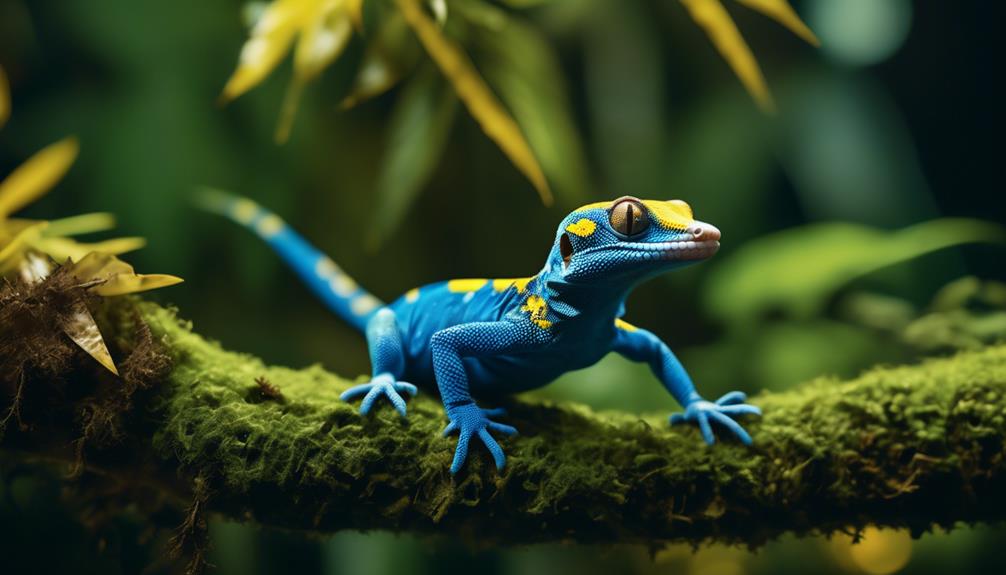
The Blue-and-Yellow Gecko, Pristurus klemmeri, is endemic to the coastal regions of northwest Madagascar, specifically the Ampasindava Peninsula and near Mandrozo Lake. This gecko is typically found in bamboo forests, often sharing its habitat with other gecko species such as Phelsuma seippi and Phelsuma madagascariensis grandis.
It is commonly seen on yellow bamboo canes, but it may also be found on green bamboo or other nearby foliage. When threatened, the Blue-and-Yellow Gecko hides inside narrow cracks in the bamboo.
Due to its limited geographic range and specific habitat requirements, this species is highly vulnerable to habitat loss and degradation. Conservation efforts are necessary to protect the remaining populations of this rare gecko from extinction.
Diet and Behavior
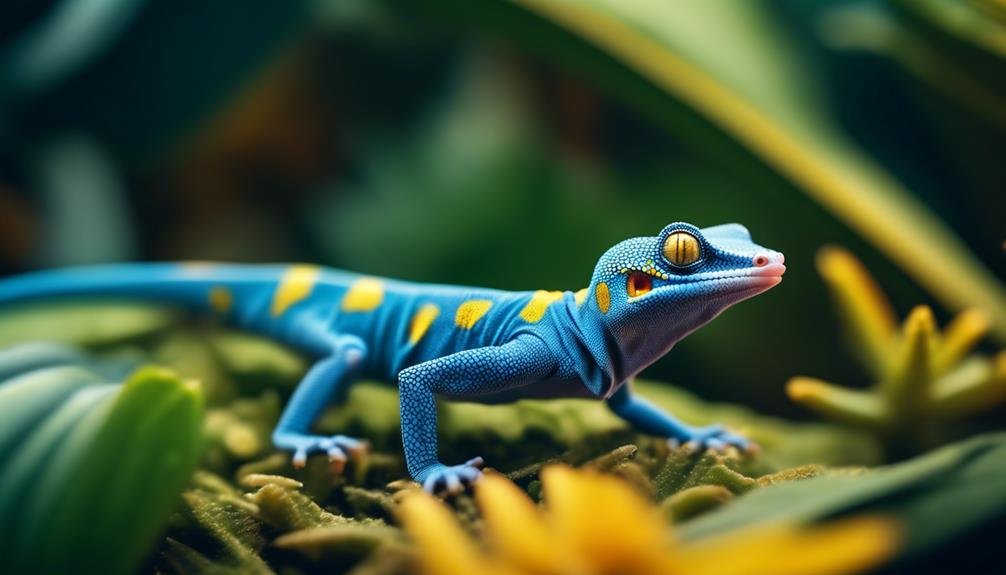
Blue-and-Yellow Geckos, also known as Pristurus klemmeri, exhibit specific dietary preferences and behavioral patterns. These geckos primarily feed on various insects and other invertebrates, as well as consume soft sweet fruit, pollen, and nectar. They are diurnal and prefer to be active during the day. Basking is a common behavior observed in these geckos. Additionally, they are known to live in small groups.
These geckos are bred extensively in captivity, and it is unlikely that they are still wild-caught. When well cared for, they can live up to 15 years. However, it is important to note that the IUCN lists Pristurus klemmeri on the Red List of Threatened Species, highlighting the urgent need for conservation efforts to prevent their extinction.
Reproduction
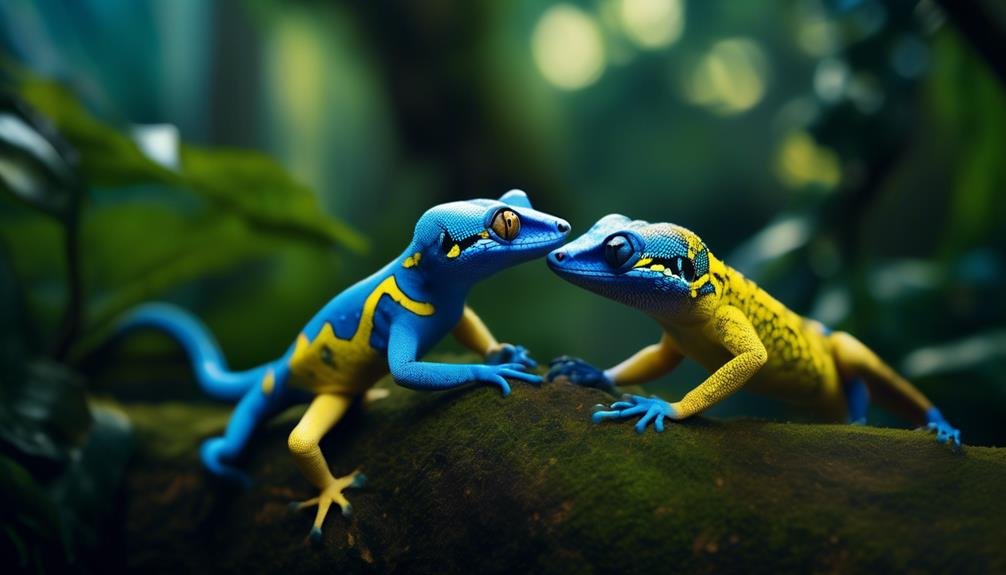
Reproduction in the blue-and-yellow gecko, Pristurus klemmeri, involves the female laying a pair of eggs and hiding them in bamboo canes. The eggs, typically two in number, are carefully concealed within the hollow canes for protection. After an incubation period of approximately 39-52 days at a temperature of 27°C (80.6°F), the eggs hatch, giving rise to juvenile geckos measuring 22-29mm (0.87-1.14in) in length. This method of reproduction is common among many gecko species, allowing for the survival of the offspring in secluded and secure locations. By utilizing the natural environment of bamboo canes, the female blue-and-yellow gecko ensures the safety and viability of her eggs until they are ready to hatch. Table 1 below summarizes the key reproductive characteristics of Pristurus klemmeri.
| Reproductive Characteristics | Blue-and-Yellow Gecko (Pristurus klemmeri) |
|---|---|
| Number of eggs | 2 |
| Incubation period | Approximately 39-52 days |
| Hatching size | 22-29mm (0.87-1.14in) |
Captivity and Conservation
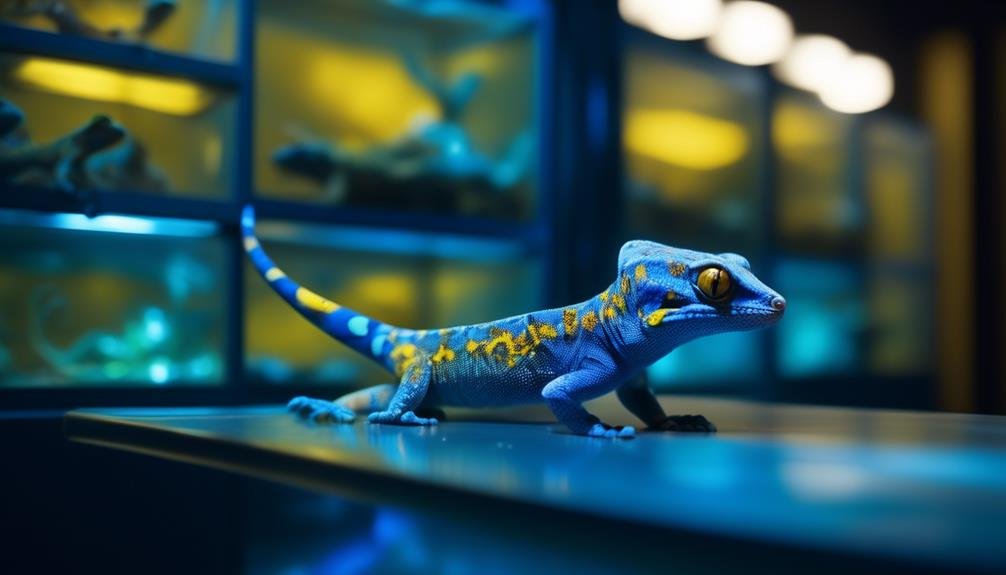
Pristurus klemmeri, a small gecko species native to northwest Madagascar, faces significant challenges in terms of captivity and conservation.
While this species is bred extensively in captivity, it is still listed on the International Union for Conservation of Nature (IUCN) Red List of Threatened Species. The captive breeding programs have helped to reduce the demand for wild-caught individuals, but the species continues to face threats in its natural habitat.
Habitat loss, due to deforestation and the conversion of land for agriculture, remains a major concern. Additionally, illegal collection for the pet trade poses a significant threat to the survival of P. klemmeri.
Conservation efforts should focus on protecting the remaining habitat, enforcing strict regulations against illegal collection, and continuing captive breeding programs to ensure the long-term survival of this rare gecko species.
Frequently Asked Questions
What Is the Average Lifespan of a P. Klemmeri Gecko in the Wild?
The average lifespan of a P. klemmeri gecko in the wild is not specified in the available information. However, in captivity, this species can live up to 15 years when well cared for.
How Do P. Klemmeri Geckos Communicate With Each Other?
- klemmeri geckos communicate through visual cues, body language, and vocalizations. They use head bobs, tail movements, and colors to signal dominance or submission. Vocalizations include chirps and squeaks.
Are There Any Known Predators of P. Klemmeri Geckos?
Known predators of P. klemmeri geckos include birds, snakes, and small mammals. These predators pose a threat to the survival of the species, further highlighting the urgent need for conservation efforts to prevent their extinction.
How Do P. Klemmeri Geckos Defend Themselves From Threats?
- klemmeri geckos defend themselves from threats by hiding inside narrow cracks in bamboo. They are diurnal and active during the day, often living in small groups. When threatened, they seek refuge in their habitat and exhibit secretive behavior.
What Are the Main Factors Contributing to the Decline of P. Klemmeri Gecko Populations in the Wild?
The decline of P. klemmeri gecko populations in the wild can be attributed to factors such as habitat loss, fragmentation, and degradation, as well as illegal collection for the pet trade. These threats pose a significant risk to the survival of this rare species.
What are the reasons for the decline in the population of the Blue-and-Yellow Gecko and what can be done to prevent its extinction?
The decline in the population of the endangered gecko in Madagascar’s forests is mainly due to habitat destruction and illegal wildlife trade. To prevent its extinction, conservation efforts should focus on protecting its natural habitat, enforcing strict regulations on wildlife trade, and raising awareness about the importance of preserving this unique species.
Conclusion
In conclusion, the rare blue-and-yellow gecko, scientifically known as Phelsuma klemmeri, is a visually striking reptile native to the northwest coast of Madagascar.
This small gecko species is facing the threat of extinction due to habitat loss and other factors.
Urgent conservation efforts are necessary to protect this unique and endangered gecko from disappearing completely.

